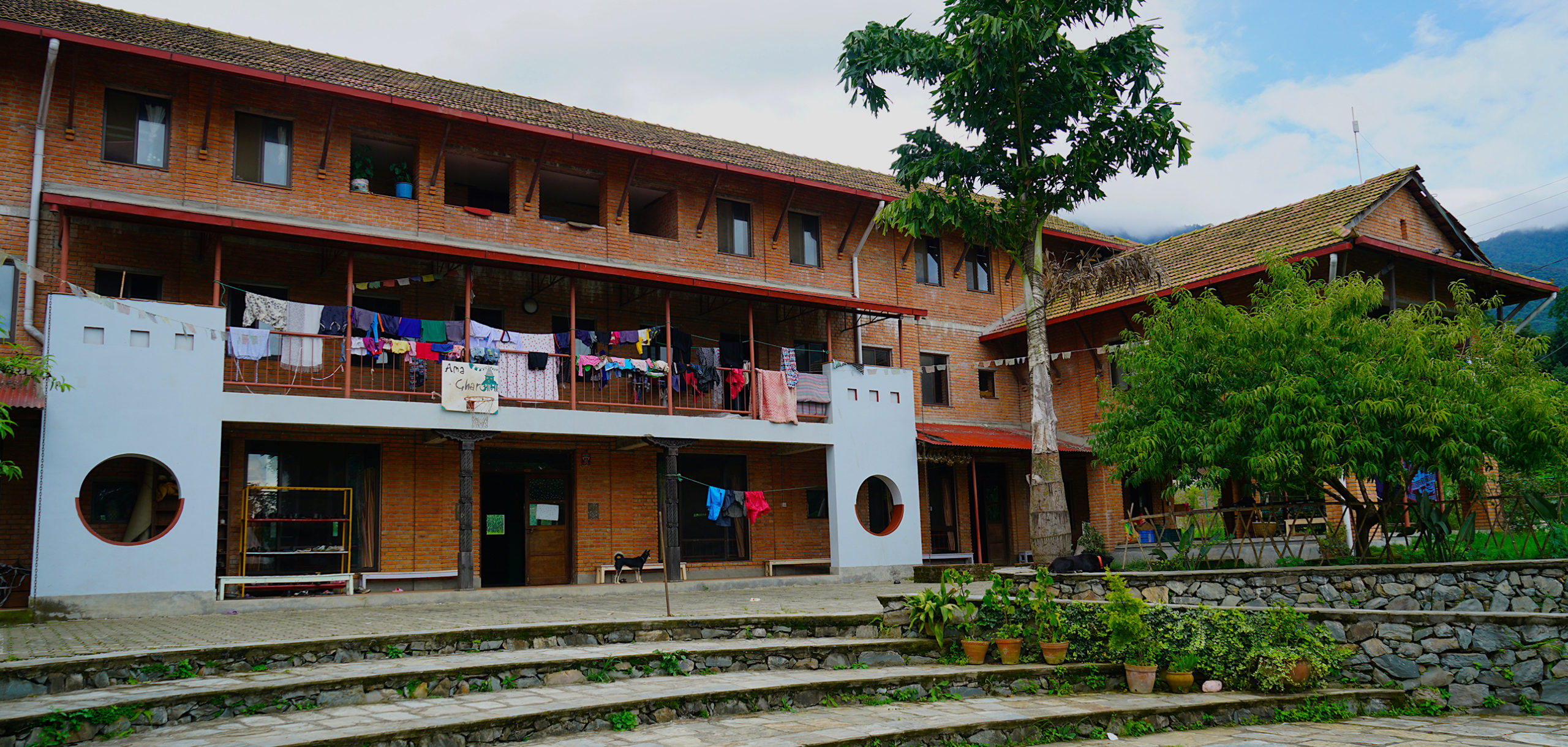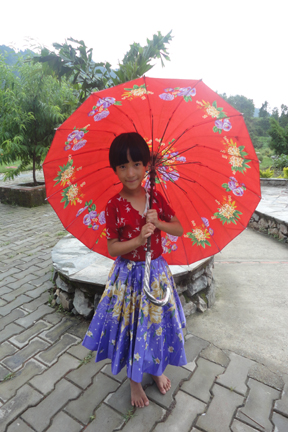Our Home
In September 2010, the children and staff of Ama Ghar moved in to their new home. After nearly nine years living in a crowded rental building, the Ama Ghar family finally has a permanent place to come home to, which can accommodate up to 75 children.

Our Ama Ghar home in Godavari
Our new home has been designed to merge traditional Nepali architecture with modern environmentally sustainable technology. Solar panels and cookers will save precious electricity and innovative waste management systems will recycle materials into fertilizers and cooking fuel.
Below is an excerpt from the Nepali Times quoting Bonnie Ellison, our Country Director in Nepal.
“Using our resources wisely first means to be eco friendly but the other good reason is to save money on utilities, which in turn frees up money for other necessities like food and educational expenses,”says Ellison, who is affectionately called “Bonnie Auntie” by the children and staff. Ama Ghar doesn’t just conserve resources but is also designed out of necessity because of the shortage of water and power.
The building has a rainwater harvesting system that collects monsoon runoff from its roof, filters and stores it in a 30,000 litre underground cistern. Excess water is used to recharge ground water through a well, or redirected into an irrigation canal so neighborhood farmers can put it to good use.
The shelter has a 2.2 KW photo-voltaic array on the roof that keeps Ama Ghar brightly lit at night while the surrounding settlement is in darkness during power cuts.
A relay switch flicks the circuit to solar when the power goes off, so we don’t have a lights-out problem,” Ellison explains. The shelter often uses solar power even when there is electricity from the mains supply to save on the utility bill.
Ama Ghar also has a decentralised water treatment system that treats waste water though a filtration system. A planted gravel filter treats excess water before it is discharged into the stream flowing nearby.
“I used to swim in the Bagmati as a child, it had fish in it,” remembers Ellison, “the condition of the Bagmati today hurts my heart, I don’t want our waste to pollute the river.”
Water that leaves Ama Ghar is tested regularly by the Environmental and Public Health Organisation that run a government accredited laboratory for testing and environmental analysis. The most recent tests have found that the water is more than suitable to travel back to the river.

Solid waste at Ama Ghar is either composted into fertiliser, or piped into an underground digester which generates methane that can be used for cooking, thus reducing dependence on expensive LPG.
Ellison hopes that the Ama Ghar house can act as a showcase for the valley, encouraging people to take responsibility for their waste. “They can see how simple it is,” she says. “We’ve had a lot of vistors, but we haven’t quite figured out how to get the attention of the locals.” But, even more importantly, Ama Ghar wants its children to be raised with a value system that emphasizes sustainable living.
Ellison plans on using the building as an educational tool for the children: “The other purpose of our eco systems is to educate our children, who are the future of Nepal as well as our neighbors. Hopefully we can work together as a community and keep our beautiful valley clean.”

Some of our older kids volunteered for a recycling project in Kathmandu

